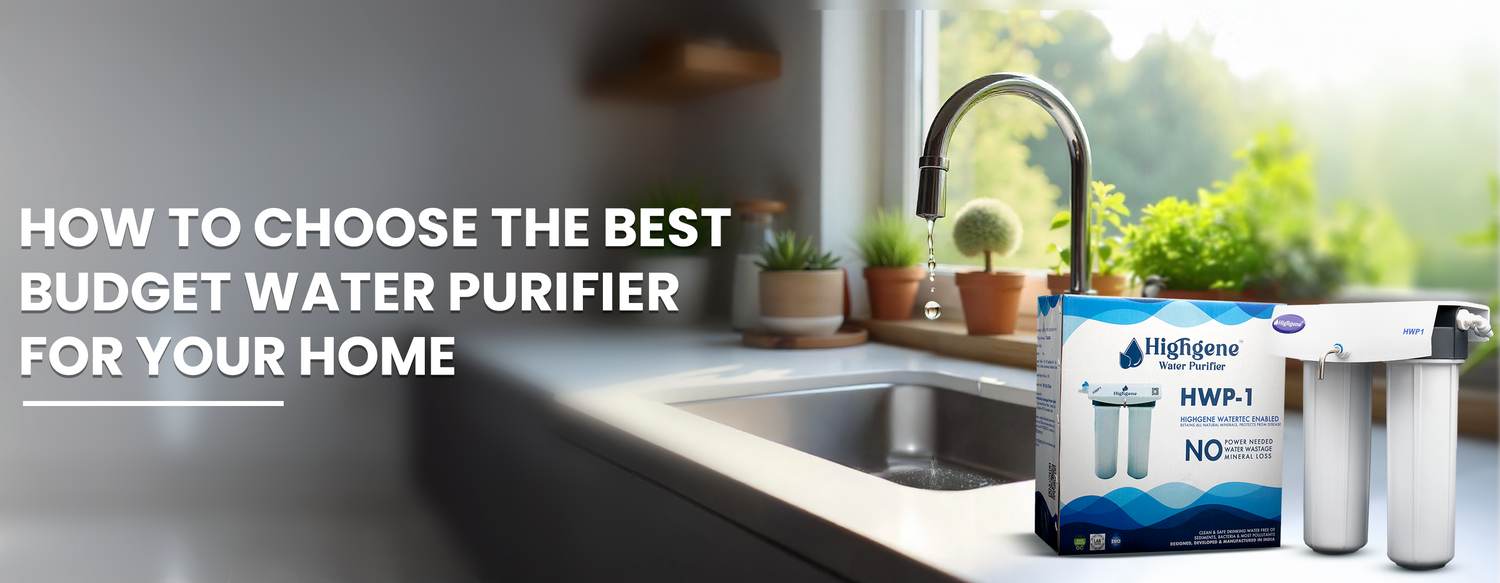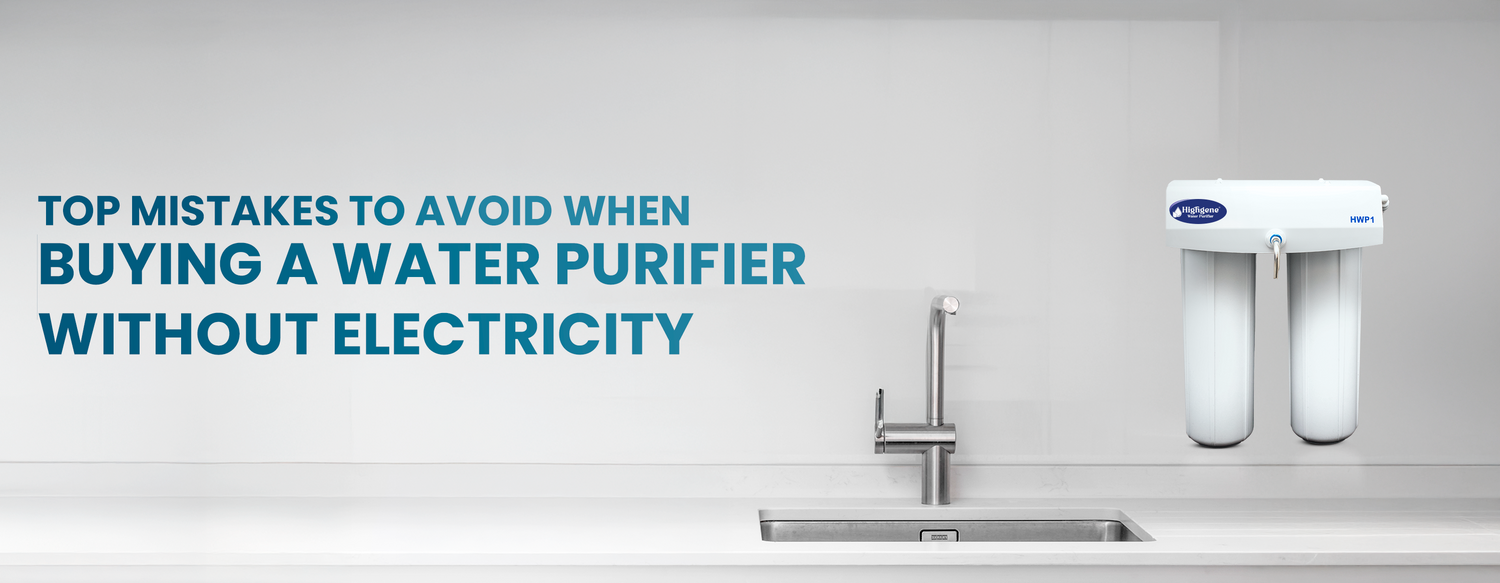There's a saying that "To err is human." However, when it comes to purchasing a water purifier any error can have serious consequences for your health. Water is such a fundamental aspect of human life that we often don't consciously realize its importance until it begins to deteriorate and impact our wellbeing. And that is too late to recognize we've made a mistake in selecting a water purifier.
A good water purifier without electricity not only saves on operational and maintenance costs but also protects against health risks, diseases, and expensive treatments that result from contaminated water. Perhaps even more important? It preserves your peace of mind and mental energy that would otherwise be consumed by dealing with these health issues. Let's explore the critical mistakes to avoid when purchasing a non-electric water purifier:
-
Insufficient Storage Capacity:
One of the most common errors is choosing a water purifier without electricity that doesn't meet your household's needs. Typically, non-electric water purifiers come with storage capacities ranging from 10 to 20 liters. Suppose you have a large family and live in an area where the water supply is irregular. In this case, insufficient storage can cause significant inconvenience during water outages. It's essential to select a water purifier based on your home or office's consumption requirements.
-
Inadequate Flow Rate Handling:
Some purifiers cannot manage the entire household's water flow rate. When water passes through filters at a rate exceeding their design capacity, smaller capacity filter models quickly become choked . This quick detrition results in more frequent cleaning, maintenance and replacement of the filters. This increases your long-term costs of ownership of the purifier. So, You must have an idea of your capacity requirements before you purchase a purifier.
-
Skipping Test for Water Quality:
In most households, decisions regarding water purifier installation are made so hastily that testing to understand water quality, contaminant levels, and contaminant types is often overlooked. As a result, even after investing in a purifier, many homes don't achieve the water quality that could have been possible with an informed, well-researched decision.
During filtration, water is typically classified into two categories based on Total Dissolved Solids (TDS) levels: water with TDS levels above 500ppm has greater purification challenges. TDS level of water from municipal supply systems, rivers and lakes, usually show below 500ppm. While groundwater and tanker water (typically with TDS > 500) contain contaminants which are different from municipal water sources.
Also Read: The Best Non-Electric Water Purifiers in India- A Comprehensive Guide
-
Misunderstanding Filtration Technique Limitations:
It's vital to understand which technique will work best for purifying your household's water supply. Non electric water filter systems are effective for water with lower TDS levels. They can remove sediments, eliminate odors, and eradicate microorganisms and bacteria. However, some cannot filter out heavy metals like chromium, cadmium, arsenic, or lead, which can affect your health in the long run. Certain techniques and filters are so rigorous that they remove beneficial minerals as well. Before purchasing, it's essential to have complete knowledge about filtration technology, its benefits and limitations.
-
Focusing Solely on Price:
Most people purchase purifiers based only on price, believing that price and product quality are directly correlated. High cost purifiers without proper purification technology lead to over-purification and make the water useless. In their price-conscious approach, they ignore crucial factors such as purification techniques, durability, maintenance costs, after-sales service, and installation feasibility in their kitchen.
In today's consumer age, the true value of any product lies in how effectively it meets the needs of you and your family. When it comes to something as essential as water, making an informed decision becomes even more critical.
Also Read: Best TDS Level for Drinking Water
Choose Highgene: A Better Non-Electric Water Purification Solution
Highgene, the water purifier without electricity stands apart from conventional options with its innovative approach to water purification. It is not like traditional systems that come with storage tanks. It filters water on-the-go and minimizes the risk of recontamination that occurs when filtered water sits in storage tanks.
Installation is remarkably straightforward—even those with no technical experience can set it up themselves in compact spaces. The purifier employs a sophisticated 3-stage filtration process, with activated carbon filters eliminating odors and smells, while the final UF membrane removes all types of viruses, bacteria, microorganisms, and even heavy metals.
This economical filter without electricity is specifically designed for water with TDS levels below 500ppm and removes 99.999% of impurities while preserving essential minerals that benefit your health. Highgene has a non electric water filter system which makes sure you get safe and clear water without losing any essential minerals. It makes your water not just clear, but healthy.
By avoiding the common mistakes and choosing a solution like Highgene, you can ensure safe and clear drinking water for your family without the ongoing costs and the complications of electric purification systems.





